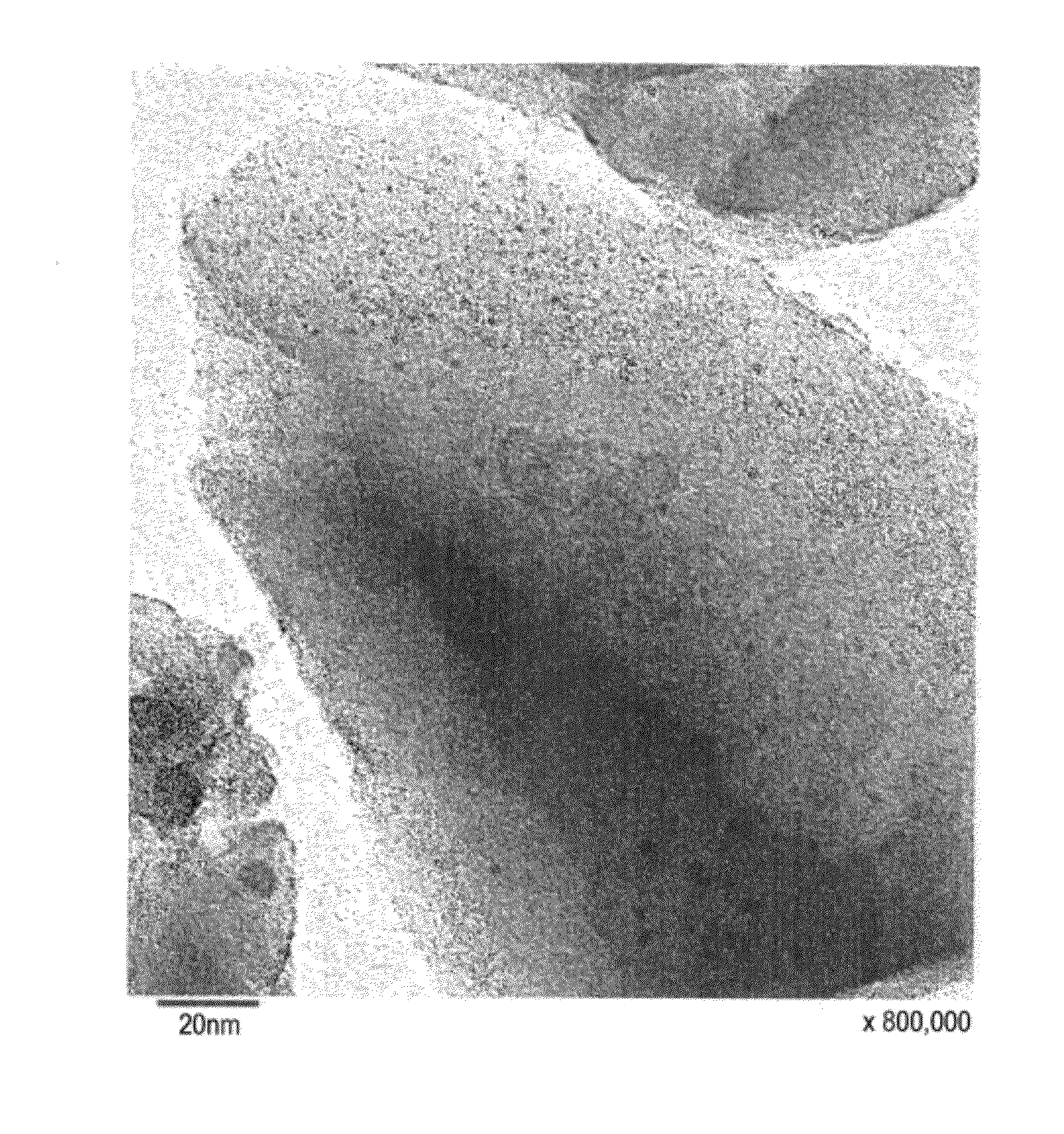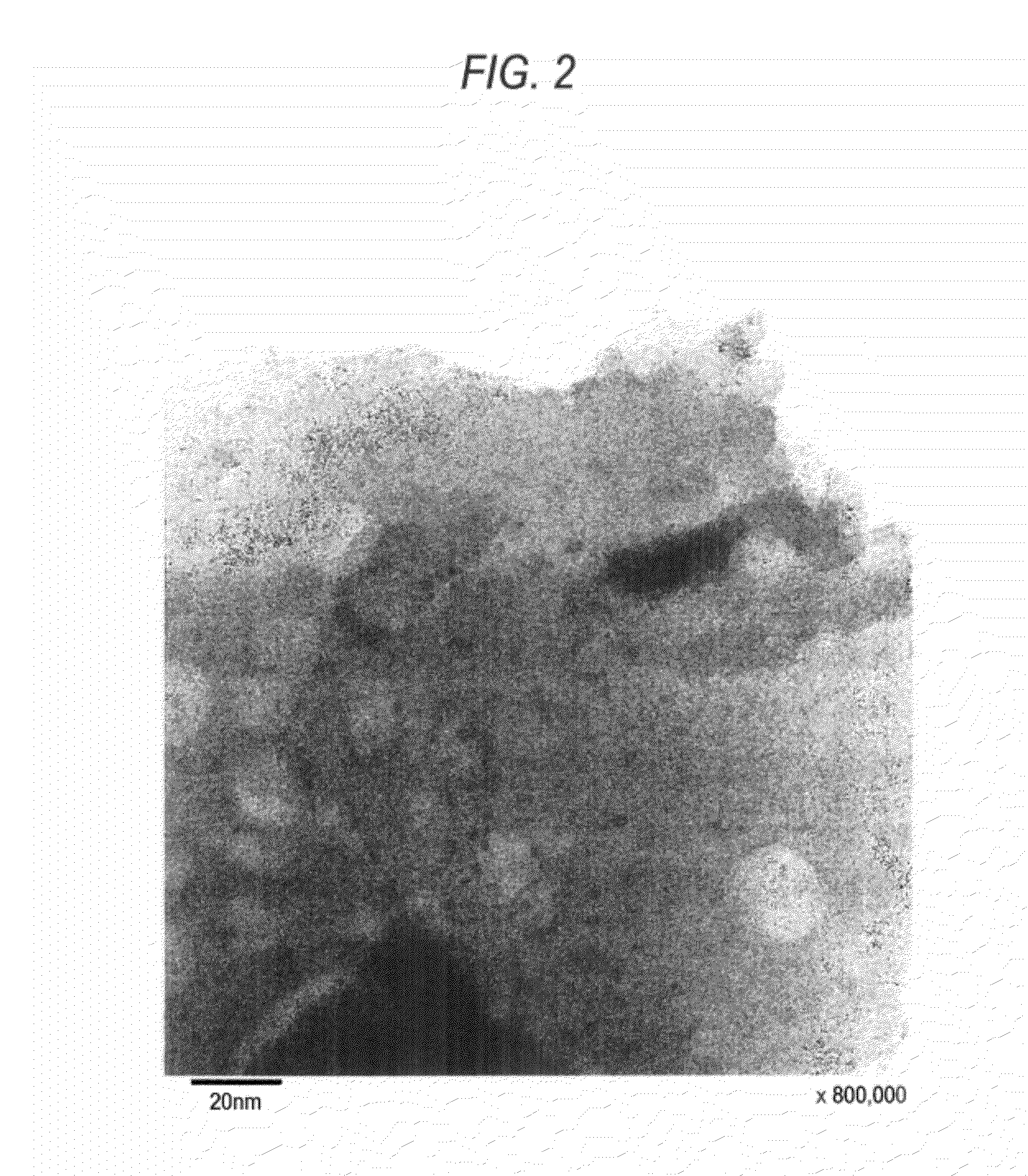Catalyst for reducing nitrogen oxides and method for producing the same
a technology of nitrogen oxide and catalyst, which is applied in the direction of physical/chemical process catalyst, metal/metal-oxide/metal-hydroxide catalyst, and separation process, etc., can solve the problems of catalyst not being able to exhibit the performance over that of the ion-exchange method, and being unsuitable for the reduction of exhaust gas from moving vehicles such as automobiles, etc., to achieve high reduction capability, simple and efficient production, and high ability to remove nitrogen oxides
- Summary
- Abstract
- Description
- Claims
- Application Information
AI Technical Summary
Benefits of technology
Problems solved by technology
Method used
Image
Examples
first embodiment to fourth embodiment
of Catalyst, and Fifth Embodiment to Twelfth Embodiment of Catalyst
[0102]The first embodiment to the twelfth embodiment of the invention are described in detail hereinunder.
[0103]The nitrogen oxides to be removed by the catalyst to which the invention is directed include nitrogen monoxide, nitrogen dioxide, nitrous oxide, etc. These may be collectively referred to as NOx. In this description, reducing nitrogen oxides means reacting nitrogen oxides on a catalyst to convert them into nitrogen, oxygen, etc.
[0104]In this case, nitrogen oxides may be directly reacted, or for the purpose of increasing the reduction efficiency, a reducing agent may be made to coexist in the catalyst. The reducing agent includes ammonia, urea, organic amines, carbon monoxide, hydrocarbon, hydrogen, etc. Preferred are ammonia and urea.
[0105]The catalyst to which the invention is directed is meant to indicate the above-described catalyst capable of reducing nitrogen oxides, and is concretely a zeolite-contain...
examples
[0304]The invention is described more concretely with reference to the following Examples; however, the applicability of the present invention is not limited by the following Examples.
examples 1a to 3a
, Comparative Examples 1A to 5A
[0305]Examples of the first to fourth embodiments of the invention are shown below.
(Measurement Method for Xrd)
[0307]Output setting: 40 kV, 30 mA
[0308]Optical condition in measurement:[0309]Divergence slit=1°[0310]Scattering slit=1°[0311]Receiving slit=0.2 mm[0312]Position of diffraction peak: 2θ (diffraction angle)[0313]Detection range: 2θ=3 to 50 degrees[0314]Scanning speed: 3.0° (2θ / sec), continuous scanning[0315]Sample preparation: About 100 mg of a sample ground by hand using an agate mortar is controlled to have a constant sample weight, using a sample holder having the same shape.
(Method of Compositional Analysis)
[0316]The sample is fused with alkali, and then dissolved in acid, and the resulting solution is analyzed through inductively-coupled plasma atomic emission spectrometry (ICP-AES).
(Measurement Method with TEM)
[0317]For sample preparation, ethanol and a catalyst powder are put into a mortar, and ground therei...
PUM
| Property | Measurement | Unit |
|---|---|---|
| diameter | aaaaa | aaaaa |
| temperature programmed desorption | aaaaa | aaaaa |
| temperature programmed desorption | aaaaa | aaaaa |
Abstract
Description
Claims
Application Information
 Login to View More
Login to View More - R&D
- Intellectual Property
- Life Sciences
- Materials
- Tech Scout
- Unparalleled Data Quality
- Higher Quality Content
- 60% Fewer Hallucinations
Browse by: Latest US Patents, China's latest patents, Technical Efficacy Thesaurus, Application Domain, Technology Topic, Popular Technical Reports.
© 2025 PatSnap. All rights reserved.Legal|Privacy policy|Modern Slavery Act Transparency Statement|Sitemap|About US| Contact US: help@patsnap.com



